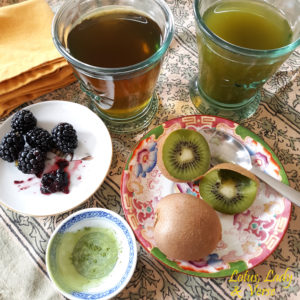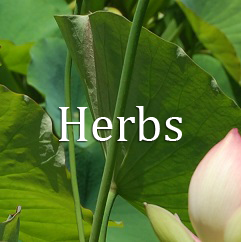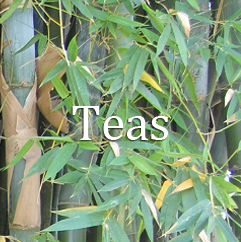Why is Green Tea So Finicky?
Looking at teas, from black, to red, to white, and green, it’s green tea that’s often selected for its very subtle taste and health benefits. Beyond the concept of tea liquor for its own sake, tea can be brewed as a beverage base and then layered with compatible flavors. Or, should I say, loaded with nuance? And yet green tea is one of the most finicky when it comes to brewing, making antioxidants available, and arriving at peak flavor all at the same time.
Which isn’t to say that you should consider green tea drinks, like the ones I propose, better than the pure-brewed tea experience. If you’re like me, when you’ve done too much, are really tired, and just need to blot out that sagging feeling—then you need a cup of really hot, freshly brewed plain tea. Yes, sometimes you need the refreshment that hot tea bestows along with a bit of caffeine, and all…
Beautiful, and Fragile
The finicky part of the tea is because green tea leaves are so fragile. All caffeinated teas come from the plant Camellia sinensis which is grown in East and Southeast Asian countries, China, India, Taiwan, Sri Lanka as well as African countries and South America. Carrying the constituents that human beings need to capture and maintain intestinal, circulatory, and nervous system health, the polyphenols in green tea leaves particularly are accessible only by specific tea-brewing methods.
According to author Sara Perry, who wrote for Chronicle Books, San Francisco, about 20 years ago, green tea is loaded with healthful constituents. She says, “green teas are very high in unoxidized, and therefore unaltered, polyphenols.”
What are Polyphenols, Anyway?
A class of constituents found in many plants, polyphenols play a role in protection against insects and infection—first in the life of the plant. Phenols are the original anti- substances, being anti-inflammatory, antiseptic, and anti-oxidant.
Polyphenols in the mint family of plants are generally pungent and aromatic, like the mints, thyme, rosemary, lavender, eucalyptus, and many more. And when humans regularly ingest a plant high in polyphenols, they tend to have fewer diseases associated with inflammation.
See this post for an Anointing Oil that features peppermint essential oil.
Green tea is delicate.
 Compared to black and scented teas, it’s been minimally processed. At a plantation where tea is hand-processed, green leaves are cultivated in shaded conditions. Once picked, the tea leaves are steamed, rolled or twisted by hand, and finally heated to “reduce water content” and keep the volatile oils intact. Before being packed for market, the green tea leaves are sorted according to quality.
Compared to black and scented teas, it’s been minimally processed. At a plantation where tea is hand-processed, green leaves are cultivated in shaded conditions. Once picked, the tea leaves are steamed, rolled or twisted by hand, and finally heated to “reduce water content” and keep the volatile oils intact. Before being packed for market, the green tea leaves are sorted according to quality.
“Green Tea has minerals such as manganese, fluoride, vitamins C, B2, D and K, and a number of amino acids.”
We can plainly see what we’ve got immediately after brewing a cup of green tea. Typically, its looks promise a very subtle taste sensation. Be aware, looks can be deceiving, as its scent, taste and the leaves’ volatile oils combine. All in minute quantities, yet these are enough to provide a very healthful drink.
Scent and Taste Combo
Tea leaves first have an association with scent, and then with color, particularly the color lent to the water. Color, especially in tea drinks, indicates an aspect of taste. On a personal note, I could absolutely drown in tea when its scent and taste match, an experience I carried over from drinking iced black tea with mint as a kid. Anything familiar about scent plus taste tends to stay with us. Do you agree?
Volatile is fleeting
Volatile oils are what gives us the particular aromas and tastes we associate with tea, or for example, with the aromatic and kitchen herbs. We infuse water with tea leaves for taste and sometimes for caffeine. In the case of green teas, we get less caffeine (less than 10% to less than 20% per cup) than from black teas. Also, we get a high quotient of catechins or EGCG, otherwise known as polyphenols. If it weren’t for the polyphenols, green tea would get less publicity from herbalists and medical practitioners alike. When we consume enough polyphenols by drinking tea, we benefit hugely. See this study which focuses on matcha, a green tea ground from gyokuro leaves, a Japanese green tea.
Tea Drunk
Since its popularity began over 30 years ago here in the U.S., green tea was much praised for its antioxidants. Author Ben Raines says that it is possible to drink too much of the beverage. He’s saying you can overdo it—but don’t—since the benefits of green tea are superior to many other beverages if you hit that sweet spot, the right amount, of goodness for you.
What is that sweet spot? Between 2 and 3 cups of green tea for most drinkers would be about right. A deduction I made from the literature, between 16 – 24 ounces of brewed tea sits right on the cusp of a therapeutic dose.
Flavorsome additions
Citrus peel and mint leaves, lemongrass and mint, or basil (fresh herb) and mint, these combinations increase the experience of drinking green tea to new heights of tea-drinking pleasure. As do berries, lime or lemon juice, and even cinnamon and spices like clove bud and cardamom.
Unprocessed tea leaves hold antioxidants, vitamins, minerals, and catechins, ready to be brewed and drunk. In terms of nutritional benefits green tea has the highest number of antioxidants, and to safeguard them until they land on our tongues, we need to treat the green tea brew with respect and care.
This Green Tea Recipe is only a little bit complex, as it requests separate brews for green tea and herbal tea, which are then married together in one beverage for your enjoyment and health. Try out such a method and I think you’ll agree it’s well worth the effort!
NOTES:
Ideas and quotes in this post are found in The New Tea Book A Guide to Black, Green, Herbal and Chai Tea by Sara Perry, 2001. Chronical Books, San Francisco.



